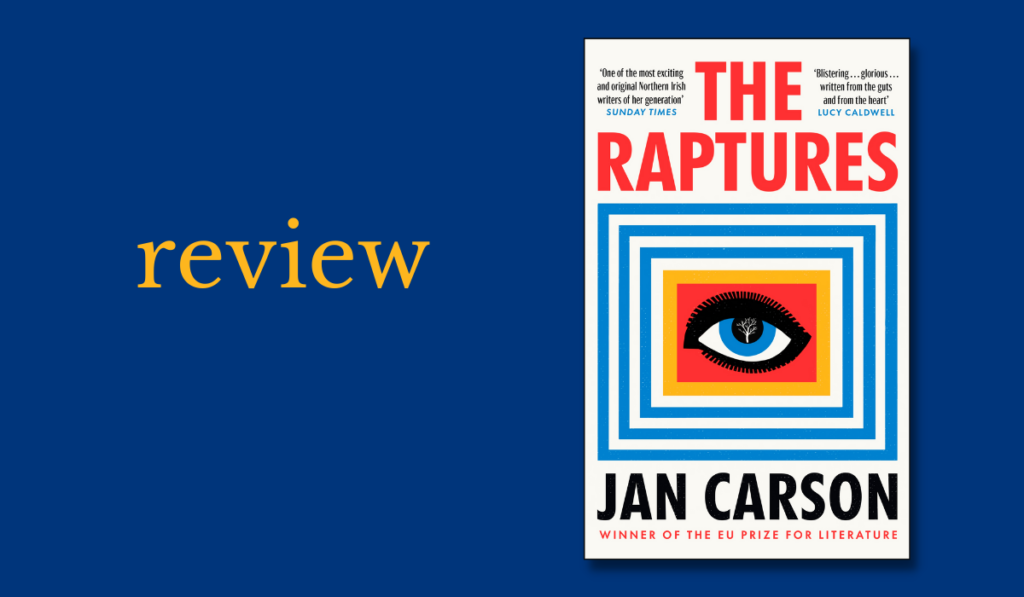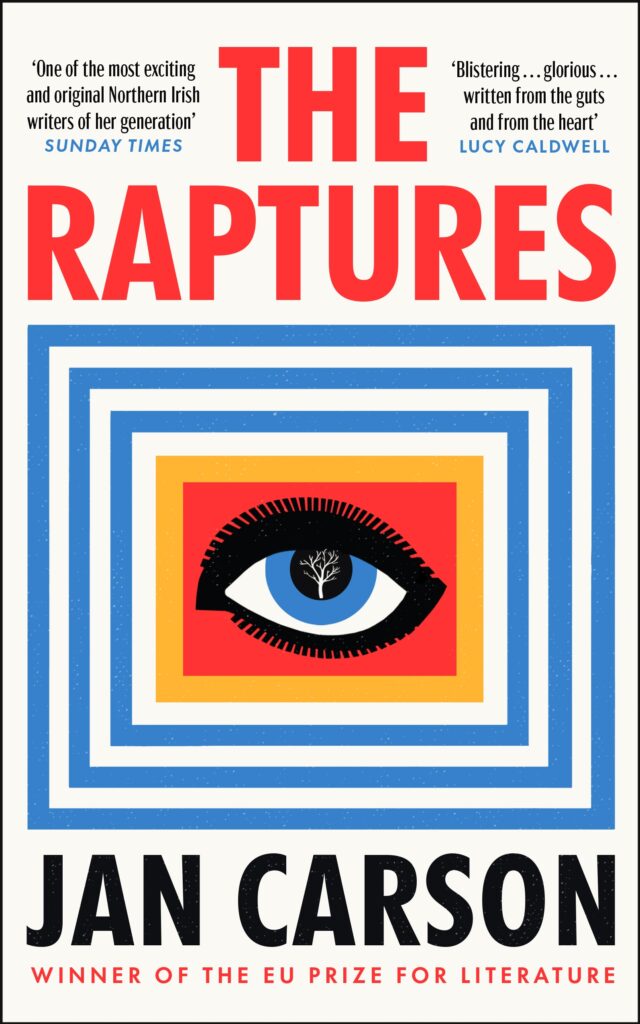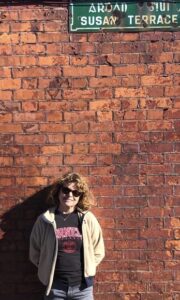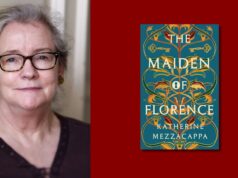
The Raptures|Jan Carson|Doubleday|ISBN: 9781781620472|€14.99
“Family ties and love, surviving in a constant low-grade war zone, small-town insularity, exclusion and otherness, pre-teen angst—all with the heart of a young girl beating firmly at its core.”
—Susan McKeever on The Raptures, by Jan Carson.
by Susan McKeever
When I tell you about the premise of this book, you could be forgiven for thinking you are facing into a Stephen King-like horror story.
But from the start, the timbre of the story is fable-like – almost mythical – and you suspend disbelief, actually becoming somewhat inured to the horror of events as they unfold.
In the small Protestant community in fictional Antrim town Ballylack, it is the beginning of the summer holidays when children from a small class just out of primary school start dying.
Ross is the first one, but it’s not a huge shock – ‘they’re that used to him being poorly his death is not a big surprise’ – but he dies so quickly, in terrible pain, with a horribly swollen head and mottled skin.
Before she even knows he’s dead, Ross appears to eleven-year-old Hannah Adger in her bathroom.
She’s mystified on several levels – he looks at least five years older, and he can’t speak, only gurgle and cry. She finds herself using one of her Granda Pete’s comforting phrases to Ross: ‘This too shall pass’, before physically having to push him out the front door as he desperately clings onto her hand.

Insularity
Hannah, who tops and tails the novel with her first-person narrative, is at the centre of events that unfold over the summer of 1993, a time when the Troubles are in full swing.
Her father watches the news with a notebook in which he writes the ‘bad stuff’ that has happened to people, so he can pray for them later: ‘Pipe bomb. Crossmaglen. 4 army injured.’
In a community that is already insular, deeply suspicious of Catholics, or Taigs, and reluctant to join ecumenical outings that happen once a year – ‘We couldn’t pronounce their funny names … their sandwiches were made from fake ham’ – Hannah’s insularity is on a whole other level.
Evangelical
Her family belongs to an extreme evangelical group, which gathers each Sunday for preaching from Pastor Bill, who urges his congregation to fast and pray for the sake of Ross.
So many normal childhood pursuits are forbidden for Hannah: no cinema; no hair crimping; no pierced ears; no chewing gum; no lessons about dinosaurs; no panto; no singing of Beatles songs in the choir; and definitely no end-of-school school tour to the Raggedy Tree – allegedly home to fairies – up at Millar’s Gap across the fields.
Hannah is not the only character we learn about – the worried, then grieving parents scramble on the periphery of the narrative, some, like Hannah’s small family unit taking more centre-stage than others.
There’s Mum, Dad, Granny and Granda Pete, the latter a rule breaker who shirks church and sports tattoos on his arms, slipping midget gems and Chewits to his adored granddaughter. A Chinese couple who run the takeaway in town. The hippy couple who refuse to medicate their child, and farmer Alan Gardner and his Filipino wife Maganda, his mum’s carer who he poached when his mother died, his wooing line to her that she had good, strong teeth.
Hysteria and paranoia
After the sudden death of the second child, Kathleen, fear, hysteria and paranoia set in amongst the community.
The RUC begin to do the rounds to the families of the remaining children, trying to calm the rising panic. A meeting is arranged among the fathers, and Seán Donnelly, an experienced crisis-management officer, is recruited: ‘Nobody needs told that Seán’s from the South … They wouldn’t normally trust a Free Stater, but the families are desperate.’
Medical tests are scheduled to start the next morning, and in scenes that echo the Covid pandemic, children are asked to arrive separately; doctors are masked and gowned, and disinfectant makes the surgery smell like a mortuary.
As Hannah waits for her test, the latest casualty, the ‘perfection multiplied’ Twins, Lizzy and Mim, appear in the room, transformed like Ross and Kathleen were into grown-up teens and with hatred blooming between them never seen when they were alive.
Humour
It turns out that Hannah is the only one in her class not to have any traces of the organophosphate that has been found in the deceased children’s blood, or in the clinging-to-life children’s blood.
One by one, the children succumb, and Hannah sees all of them soon afterwards, in encounters that are often funny, rather than spooky.
They’ve formed a gang – the DKs or Dead Kids. Some of them, like Matty, whose home life bordered on neglect, doesn’t mind being dead – ‘it’s a lot less hassle than being alive.’
Hannah observes that death suits him – he’s never looked better, has clear eyes and has filled out as if he’s being well fed for once. It is in these conversations with the dead that we willingly buy into the story’s magical realism. This carries through to the Raggedy Tree, which reappears in the plot towards the end, forming a full circle from the first mention at the end of school.
Ballylack limbo
Theologically, the Rapture refers to an end-of-days event when Christians ‘rise in the clouds to meet the Lord in the air’, but this does not happen to the DKs: they’re not in a heavenly sky – they still live in a kind of Ballylack Limbo, which is just Ballylack with fewer people.
They get drunk on looted beer from Thompson’s store, they smoke, snog, and have mad dance parties down the community centre. They even have a theme song – ‘No Limit’ by 2 Unlimited, a thumping pop anthem which they sing while thumping the wheelie bins for a beat.
Jan Carson’s third novel is written from a familiar place – she grew up in Ballymena, an Antrim town with a famously austere council.
Through her writing, she has shared a vivid sense of a Protestant experience in the North, and this book is the book she wanted to write since she realised she wanted to write, admitting there’s a bit of her in almost all Ballylack’s residents.
The link to the pandemic, it turns out, was a complete fluke – she finished it in November 2019.
In The Raptures, Carson has seamlessly merged the overriding plague-time theme with many others: family ties and love, surviving in a constant low-grade war zone, small-town insularity, exclusion and otherness, pre-teen angst – all with the heart of a young girl beating firmly at its core.

Susan McKeever is an editor, writer and ghostwriter for several Irish and international publishers and authors. She works from her home in the red-brick heart of Dublin’s Portobello. @MckeeverSusan,susanmckeever.biz












